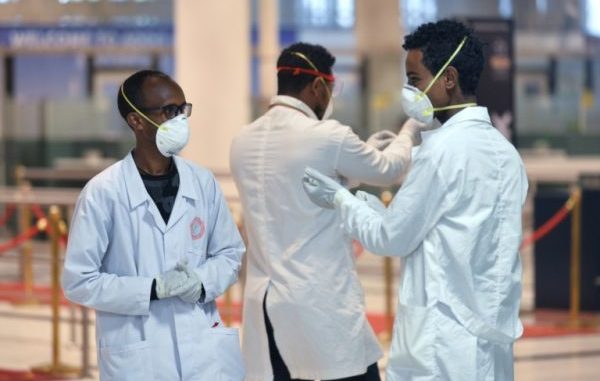
I think you will find this interesting if you don’t already have it:
Summary of Goldman Sachs Investor call where 1,500 companies dialed in. The key economic takeaways were:
50% of Americans will contract the virus (150m people) as it’s very communicable. This is on a par with the common cold (Rhinovirus) of which there are about 200 strains and which the majority of Americans will get 2-4 per year.
70% of Germany will contract it (58M people). This is the next most relevant industrial economy to be effected.
Peak-virus is expected over the next eight weeks, declining thereafter.
The virus appears to be concentrated in a band between 30-50 degrees north latitude, meaning that like the common cold and flu, it prefers cold weather. The coming summer in the northern hemisphere should help. This is to say that the virus is likely seasonal.
Of those impacted 80% will be early-stage, 15% mid-stage and 5% critical-stage. Early-stage symptoms are like the common cold and mid-stage symptoms are like the flu; these are stay at home for two weeks and rest. 5% will be critical and highly weighted towards the elderly.
Mortality rate on average of up to 2%, heavily weight towards the elderly and immunocompromised; meaning up to 3m people (150m*.02). In the US about 3m/yr die mostly due to old age and disease, those two being highly correlated (as a percent very few from accidents). There will be significant overlap, so this does not mean 3m new deaths from the virus, it means elderly people dying sooner due to respiratory issues. This may however stress the healthcare system.
There is a debate as to how to address the virus pre-vaccine. The US is tending towards quarantine. The UK is tending towards allowing it to spread so that the population can develop a natural immunity. Quarantine is likely to be ineffective and result in significant economic damage but will slow the rate of transmission giving the healthcare system more time to deal with the case load.
China’s economy has been largely impacted which has affected raw materials and the global supply chain. It may take up to six months for it to recover.
Global GDP growth rate will be the lowest in 30 years at around 2%.
S&P 500 will see a negative growth rate of -15% to -20% for 2020 overall.
There will be economic damage from the virus itself, but the real damage is driven mostly by market psychology. Viruses have been with us forever. Stock markets should fully recover in the 2nd half of the year.
In the past week there has been a conflating of the impact of the virus with the developing oil price war between KSA and Russia. While reduced energy prices are generally good for industrial economies, the US is now a large energy exporter, so there has been a negative impact on the valuation of the domestic energy sector. This will continue for some time as the Russians are attempting to economically squeeze the American shale producers and the Saudi’s are caught in the middle and do not want to further cede market share to Russia or the US.
Technically the market generally has been looking for a reason to reset after the longest bull market in history.
There is NO systemic risk. No one is even talking about that. Governments are intervening in the markets to stabilize them, and the private banking sector is very well capitalized. It feels more like 9/11 than it does like 2008.
END

Be the first to comment